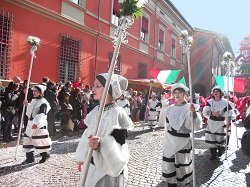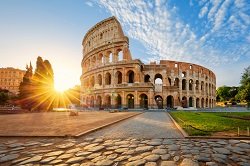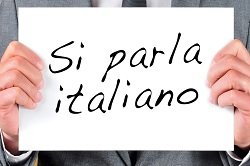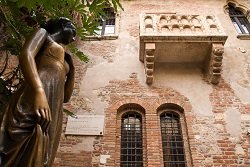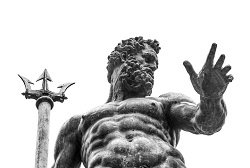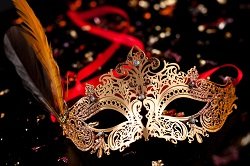Italian Art 101 - Leonardo DaVinci, Michelangelo, Raphael, Titian, Botticelli, Bernini
When people think of Italian art, names like Michelangelo and Leonardo DaVinci pop to their mind right away – which is quite justified as both of them are rather important Italian artist of their and also our time. But what else does Italy have to offer when it comes to art? In this article, we will introduce some of the most important Italian artists, most of them sculptors and painters – or both at the same time - to you.
Leonardo DaVinci
Leonardo DaVinci is a well-known artists, philosopher, and astronomer – long after he died. He lived from 1452 to 1519, and left many marks on the world. He was one of the main characters of the Italian Renaissance, and was not only responsible for the creation of some awesome, beautiful, and incredibly detailed pieces of art, but also encouraged the emergence of new ideas and more critical thinking.
One of his most famous and instantly recognizable paintings is the famous Mona Lisa. Whole books have been dedicated to different areas of Leonado DaVinci's body of work – from his paintings to works on anatomy, and his philosophical ideas. If you could only choose one Italian artist to learn more about, then it would make sense to choose Leonardo DaVinci.
Michelangelo
Michelangelo, who was born in 1475, is another Italian artist who was (and still is) very important and influential. His works of art can be seen in many places, the most famous one most likely being the work he did in the Sistine Chapel (which took him four years). Other famous pieces are his sculpture of David and the Pieta. Michelangelo and Leonardo DaVinci did meet, as they lived during the same era. You would think that those two geniuses could have created something mind-blowing together – however, their tempers did not mix very well. People tried to get them to work together but it never turned out to be a success. Which might be good, too, because we do appreciate the works of both artists for what they are.
Raphael
Raphael, born in 1483, was another contemporary of Michelangelo and Leonardo DaVinci. You do get the impression that this time was the pinnacle of Italian art – and rightfully so. Two well known paintings of Raphael are the Crucifixion and the impressive “School of Athens”. While Raphael was not as inventive as his two contemporaries, and did not come up with any incredible new discoveries or philosophical ideas, he was a very respected painter and received plenty of commissions. His style was (and is) described as more refined than the one of Michelangelo – and his character apparently also was a bit more pleasant. People had less issues with him than with Michelangelo, who tended to lose his temper quite easily.
Michelangelo Merisi da Caravaggio
In 1571, a boy called Michelangelo Merisi da Caravaggio. We will call him just Caravaggio here, to avoid the confusion with the other Michelangelo. Caravaggio was a painter who had a huge influence on future painters by showing them how lighting can be used in a more realistic way in paintings. Caravaggio also has the honor of often being called the father of modern painting (at least in Italy). One of his most important paintings is The Calling of St. Matthews.
Titian
Titian was the teacher of Caravaggio, and logically should also be mentioned as Caravaggio most likely would have turned into a different kind of painter without his excellent mentor. And honestly, Titian is the one who deserves more respect – and his contemporaries also gave it to him, often referring to him as “The Sun Amidst Small Stars”. He was a very versatile painter, creating quite a few stunning artworks, like “Venus and Organist and Little Dog”, and “The Rape of Europa”. His works are very detailed and if you ever look at one, you should take a few minutes to take the details in and imagine how much work has gone into creating those.
Botticelli
Botticelli, who was another important part of the early Italian renaissance, is famous for the artwork “The Birth of Venus”. He was not as popular as Michelangelo and Leonardo DaVinci during his life-time, however, his paintings have recently received more attention and praise. While he might not be as important as the other big artists of his time, he definitely worth your time, too.
Bernini
Bernini, born in 1598, came later than the other artists mentioned here – so he also did not have to directly compete with the geniuses that came before him. He was mainly a sculptor and an architect. Many of his original works can still be seen in modern Italy, like the Piazza San Pietro (yes, the huge plaza in front of the Basilica in Rome with all those sculptures looking down at you).
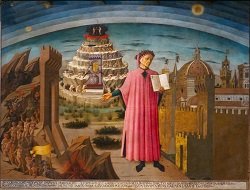

_(2).jpg)
